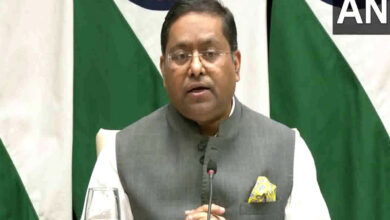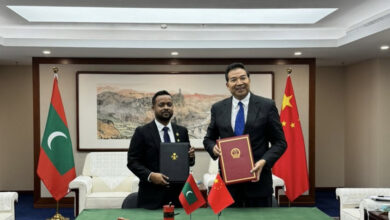India’s Strengthening Energy Diplomacy With Southeast Asia
India is discussing cross-border power sharing in Southeast Asia, part of an attempt to become a major electricity exporter.

By Shruti Sharma
India is engaged in discussions with Southeast Asian nations, such as Singapore and Thailand, to facilitate the cross-border trade of renewable energy (RE) electricity. Plans include establishing grid connections both underwater and on land, contingent on cost factors. This initiative aims to significantly increase India’s cross-border electricity sales, which presently involve Nepal, Bangladesh, Bhutan, and Myanmar, with a combined power transfer capacity of around 4,423 MW. This move is seen as a testament to India’s deepening diplomatic relationships in the region, highlighting its ambition to become a major producer.
While Southeast Asian countries aspire to create a regional grid for multilateral power trade, practical progress has been limited due to various challenges. The region’s energy demand has also risen substantially, driven by economic growth, but remains largely reliant on fossil fuels, leading to increased carbon dioxide emissions. Meanwhile, India’s vigorous pursuit of renewable energy has yielded impressive results, with installed capacity growing from 115.94 GW in March 2018 to 172 GW in March 2023.
If India successfully forges these agreements, it will not only strengthen its energy diplomacy with Southeast Asia but also cement its position as a prominent regional renewable energy producer.
India’s strategic decision to forge alliances with Southeast Asian nations comes at a pivotal juncture, signaling a concerted effort to bolster regional cooperation. Central to these plans is the establishment of both underwater and on-land grid connections, contingent upon careful consideration of cost dynamics. While the allure of cross-border grid interconnections has garnered considerable investment and governmental attention across regions spanning Europe to Southeast Asia, the escalating expenses associated with subsea cable infrastructure, coupled with volatile prices of essential raw materials required for grid enhancements, and prevailing geopolitical tensions, have cast a shadow of doubt on the feasibility of such ambitious undertakings.
The urgency of targeted investments in energy security looms large as global energy landscapes undergo substantial transitions. Invariably, the demand for electricity surges across all envisioned scenarios, alongside the exponential rise in output from variable renewable sources like wind and solar photovoltaics. Effectively ensuring the security of electricity supply within this evolving context necessitates substantial allocations toward expansive network development, demand-side management, digitalization, fortified cyber resilience, and meticulous inter-regional strategizing.
Notably, as the region embraces policy measures to gradually distance itself from oil dependency, the significance of maintaining oil stockpiles as a safeguard against supply disruptions remains unabated. Several Southeast Asian nations have diligently explored the establishment of strategic reserves, with Vietnam already operationalizing such an initiative. Leveraging international cooperation, the potential for constructing oil-sharing agreements with neighboring countries also comes into play.
In line with its aspirations, India envisions a substantial ramp-up of its renewable energy capacity, including a surge in hydropower, aiming to achieve a monumental 500 GW by 2030, a remarkable leap from the current 177 GW. Foreseeably, solar parks are positioned to underpin a significant portion of this newfound capacity. The endeavor holds the promise of not only mitigating fossil fuel reliance but also enhancing the availability of solar power for extended periods throughout the day.
India’s Political and Economic Influence in the Region
Prime Minister Narendra Modi’s administration has been diligently fostering closer political and economic affiliations with neighboring nations, in a strategic move to counterbalance the escalating regional sway of China. Against this backdrop, Indian energy authorities engaged in both individual and collective dialogues with select countries during the G-20 ministerial discussions held in the Indian state of Goa in July 2023. These conversations centered around propelling the advancement of regional power grid interconnections, a pivotal initiative for the nation’s energy agenda.
Recognizing the significance of G-20 member nations’ support, these discussions serve as crucial milestones in securing the endorsement of financiers and project developers, vital stakeholders whose backing is indispensable for making informed investment decisions. In a noteworthy move, India has enlisted the collaboration of France’s EDF to formulate a comprehensive regulatory framework aimed at tackling pressing challenges within this endeavor. Chief among these hurdles is establishing a viable pricing structure. The progress of this undertaking is expected to culminate in the delivery of a comprehensive report by EDF by year-end, as confirmed by an industry source.
The strategic vision comes into sharper focus with the prospect of linking India’s national power grid with that of Myanmar, a significant step that holds the potential to not only bolster the stability of the regional grid in Myanmar but also facilitate transmission toward Thailand and even extend into the eastern reaches of Asia.
Challenges Ahead
A pivotal hurdle in the trajectory of this endeavor lies in the intricacies of transmission charges related to the power conveyed through the interlinked regional network. While the allure of cross-border grid interconnections has garnered substantial investments and captured the attention of governments spanning Europe to Southeast Asia, the stark escalation in subsea cable construction costs, the tumultuous surge in raw material prices crucial for grid enhancements, and the looming shadows of geopolitical tensions have collectively cast doubt upon the economic feasibility of such ambitious ventures.
In light of these challenges, India could potentially find itself hindered by notable delivery shortfalls and an overarching deficiency in the capability to effectively translate commitments into tangible on-ground outcomes. As New Delhi marches forward, it becomes imperative to exercise meticulous caution in navigating this complex terrain, one marked by intricate geopolitical dynamics and multifaceted economic considerations.
India must embrace a dual-pronged approach. On one hand, it needs to strategically engage in Southeast Asia, diligently examining every move and potential pitfall. Simultaneously, the focus must intensify on bolstering its own capacity to execute projects seamlessly. This not only entails the effective deployment of resources but also cultivating the expertise and acumen required to turn ambitious promises into tangible realities.
In essence, India’s journey toward regional energy collaboration demands an astute and cautious navigation of financial, technical, and geopolitical complexities. This deliberative approach is essential to ensure that the nation not only reaps the rewards of enhanced energy cooperation but also strategically positions itself as a capable and dependable partner in the dynamic landscape of international energy endeavors.




